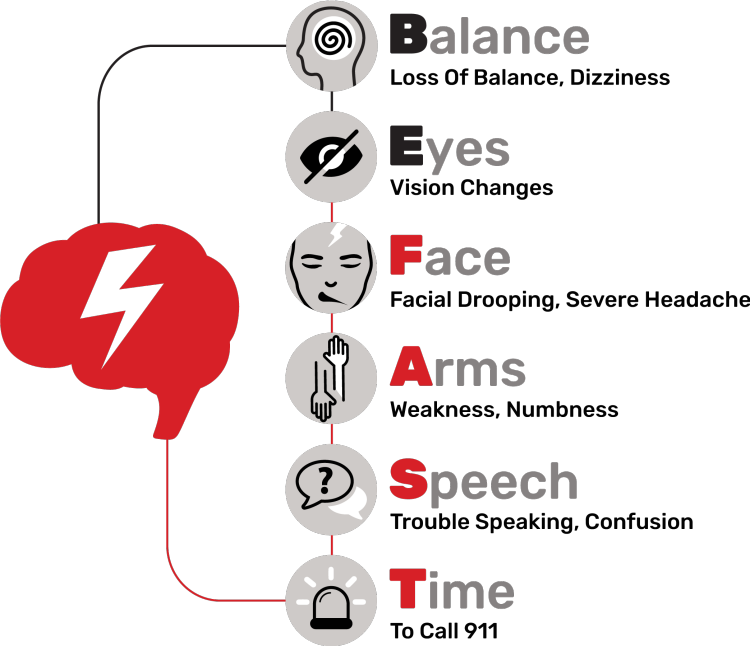Many people are avoiding in-person doctor’s visits to limit potential coronavirus exposure -- or are simply ignoring health concerns altogether. However, immediate medical attention is critical for medical emergencies such as strokes.
The fifth leading cause of death in the U.S., stroke occurs every 40 seconds, and it can happen to anyone, of any age, at any time.
While, in some cases, quick action can help with recovery, statistics suggest that many Americans may be avoiding hospitals when they need them most due to anxieties surrounding the pandemic. A recent study published in “JAMA Internal Medicine” showed that emergency room visits to five major healthcare systems decreased by 40 percent as COVID-19 cases spiked.
Beyond pandemic fears, one age-old barrier to seeking timely medical attention for stroke is simply awareness of signs and symptoms. Teach family and friends to recognize the classic symptoms of a stroke -- loss of balance, vision changes, face drooping, arm and leg weakness, issues with speech, and confusion. Once the symptoms are recognized, react rapidly; only one in five U.S. adults can recognize ten signs and symptoms of stroke, according to a nationwide survey*. What’s more, nearly 70 percent of the survey respondents say they’re knowledgeable about stroke, yet 62 percent falsely believe that signs of stroke come on slowly over a day or two, when symptoms of stroke can come on suddenly.
Experts say that immediate medical attention, which is vital, relies on everyone learning and being able to recognize the BE FAST signs and symptoms of a stroke in themselves and others and calling 911 immediately.
BE FAST stands for Balance, Eyes, Face, Arm, Speech, Time and refers to these signs of stroke.
For more information and resources, visit Strokeawareness.com, developed by Genentech Inc, a member of the Roche Group.

